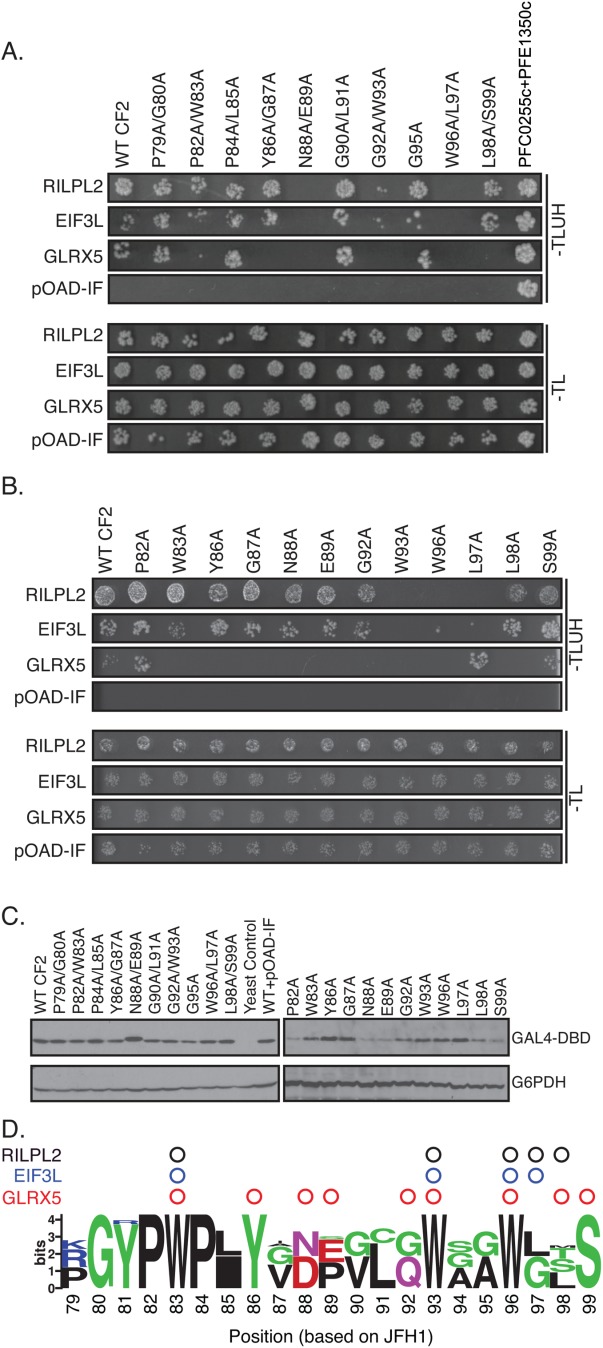Figure 6.

Distinct amino acids in MoRF2 are required for binding to cellular proteins. (A and B) Amino acid substitutions in Core MoRF2 disrupt the binding to cellular proteins. (A) Dual alanine substitutions were introduced into Core MoRF2 and assayed for their effect on binding to cellular proteins using the Y2H assay. Top and bottom panels show growth on Y2H selection medium and growth control media, respectively. pOAD-IF is a control plasmid in which URA3 is in frame with the GAL4 activation domain and no human gene is present. PFC0255c+PFE1350c is pair of interacting Plasmodium falciparum proteins that serve as a positive control. (B) Single alanine substitutions were generated for each dual alanine substitution that disrupted binding to at least one cellular protein and tested for their impact on binding to cellular proteins using the Y2H assay. (C) Western blots to confirm expression of mutant Core fragments. Upper blot was probed with anti-GAL4 DNA binding domain antibody (GAL4-DBD); lower blot was probed with anti-glucose-6-phosphate dehydrogenase antibody (G6PDH) as a loading control. (D) Summary of the effect of HCV Core MoRF2 substitutions on binding to human proteins. Web Logo of Core MoRF2 was derived from alignment of the six HCV genotypes and eight representative NPHV isolates. Circles indicate substitutions that disrupted binding to RILPL2 (black), EIF3L (blue), or GLRX5 (red). All experiments were performed at least twice in independent replicates; representative results are shown.
